Youths from villages in Altay Mountains build on traditional skills to excel
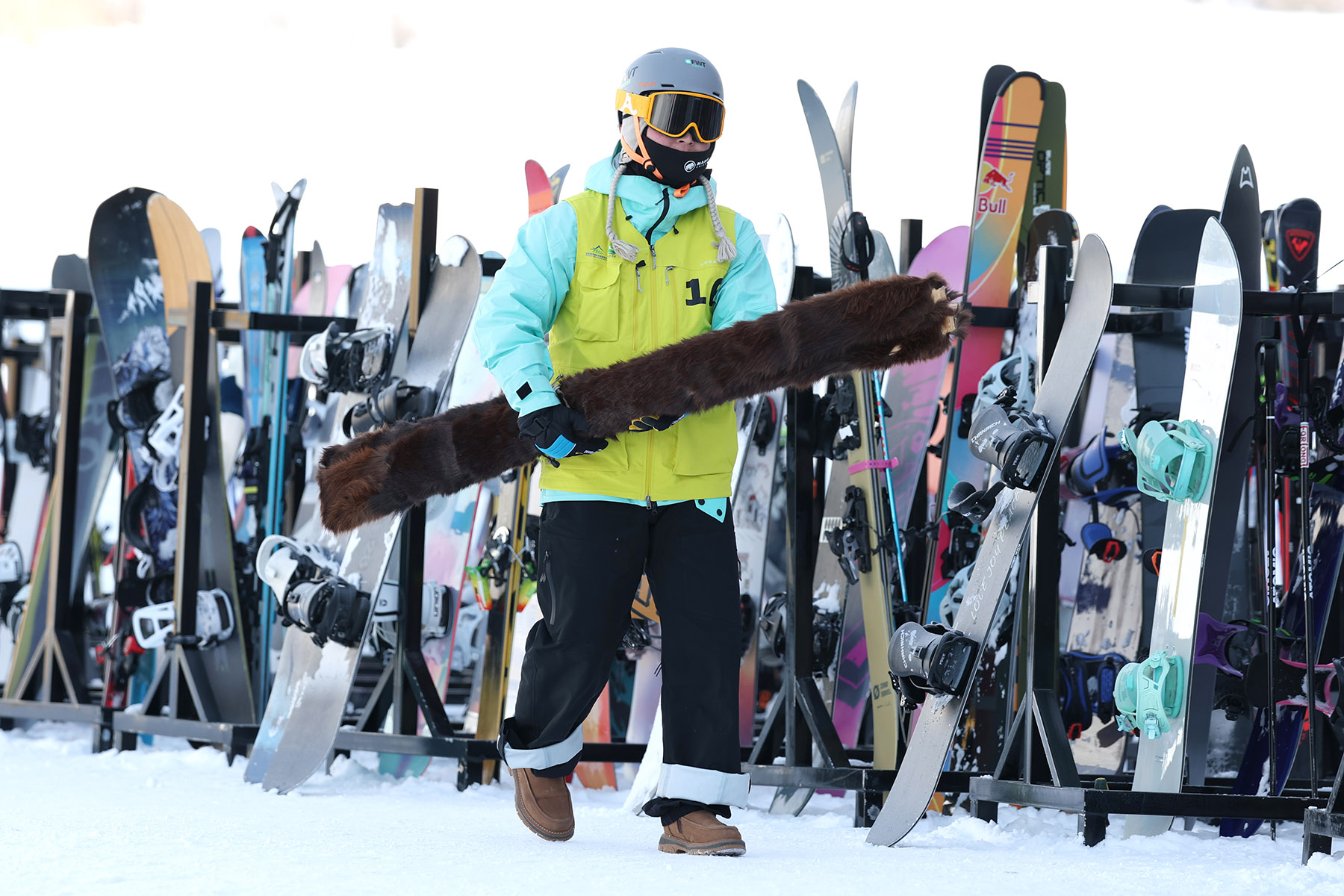
Azamat Adalbek is a skilled snowboarder. However, the 16-year-old from Altay prefecture in the Xinjiang Uygur autonomous region knows he still has a long way to go before he becomes a fur skiing pro like his father and uncle, and Azamat had been looking forward to owning a pair of fur skis tailor-made for him by his father.
The teenager's wish was fulfilled when he returned home to Meilifeng village at the foot of the Altay Mountains in January for his school's winter break. Heavy snowfall during the long winter, which often lasts from late October to early April, had created a fairytale-like atmosphere in the village of herdsmen from the Kazak ethnic group.
READ MORE: China's ethnic athletes shine at Harbin Winter Asian Games
Azamat's father Adalbek Halengbek welcomed his son with a pat on the back and announced he had a surprise for him. As Azamat followed his father into the living room, his face lit up with pleasure when he spotted a pair of fur skis made of pinewood taking shape.
"The length of the skis has to match the user's height," said the 46-year-old as he put the tails of the skis on the floor and held them up vertically next to Azamat to make the comparison. "See, they are just perfect for Azamat. It's about time my son owned a pair of fur skis of his own and started to learn to master them."
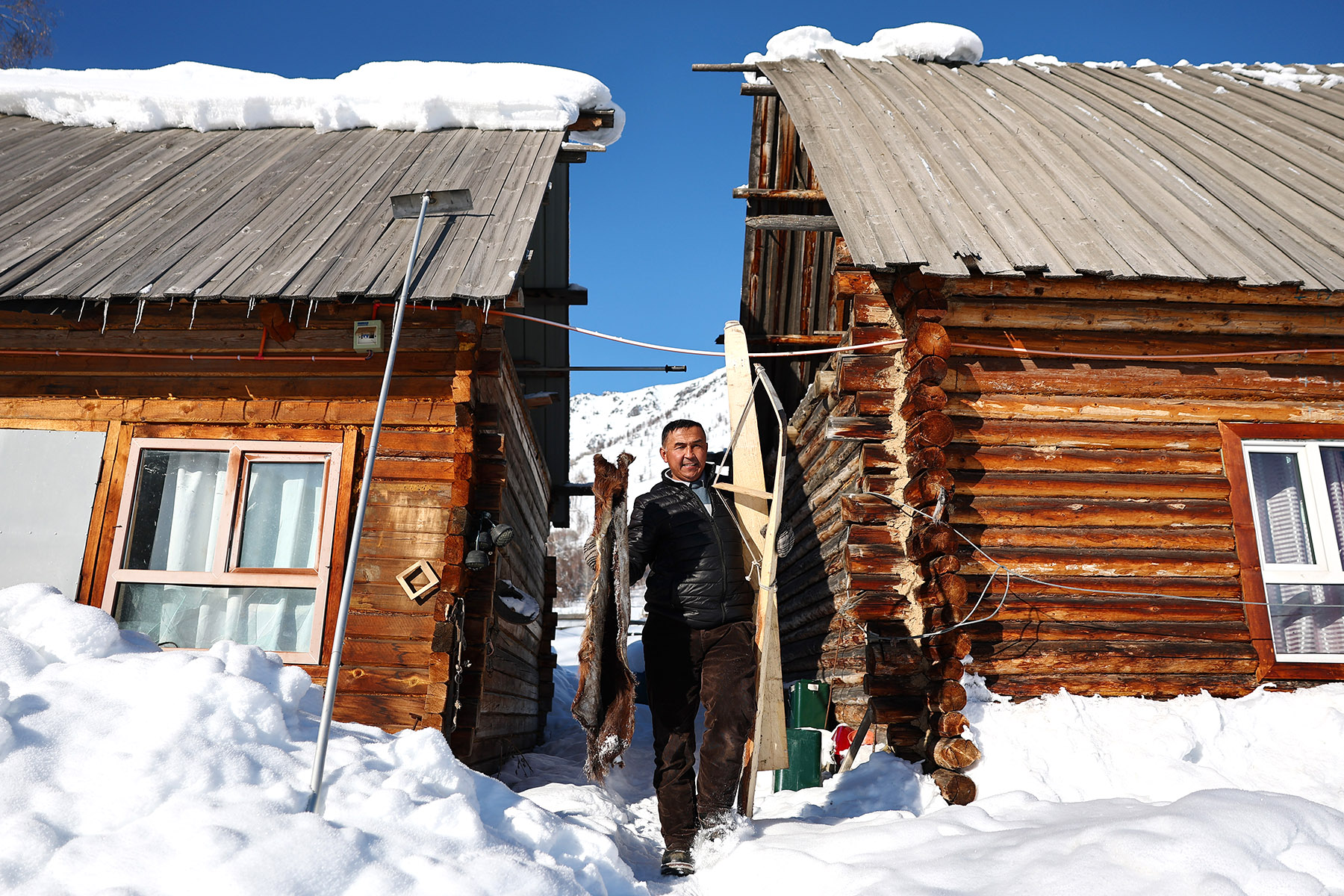
Adalbek explained that it would take another week before the curves on the tips of the skis made of pinewood, which is tough yet lightweight and has good elasticity, can be permanently fixed. Next he will line the outer side of the skis with six to 10 strips of horsehide from the animal's lower legs, as the coat grows in the same direction and the hair is short and brittle.
When going downhill, the fur sticks to the ski, increasing the sliding speed. When going uphill, it goes against the board, increasing friction and providing an anti-slip function. The skier uses one birch-wood snow stick to maintain balance and maneuver.
"The fur skis embody the wisdom of our ancestors. And making them is not only a traditional craft, but also an important part of the local culture. It reflects the wisdom of living in harmony with nature, and is a manifestation of regional cultural diversity," Adalbek said.
In 2005, cave paintings depicting Altay people hunting on skis with poles were discovered in the Dundebulak rock art complex. Archaeologists estimate that the paintings could be more than 10,000 years old. Since then, Altay has been recognized by many as one of the birthplaces of skiing as we know it today.
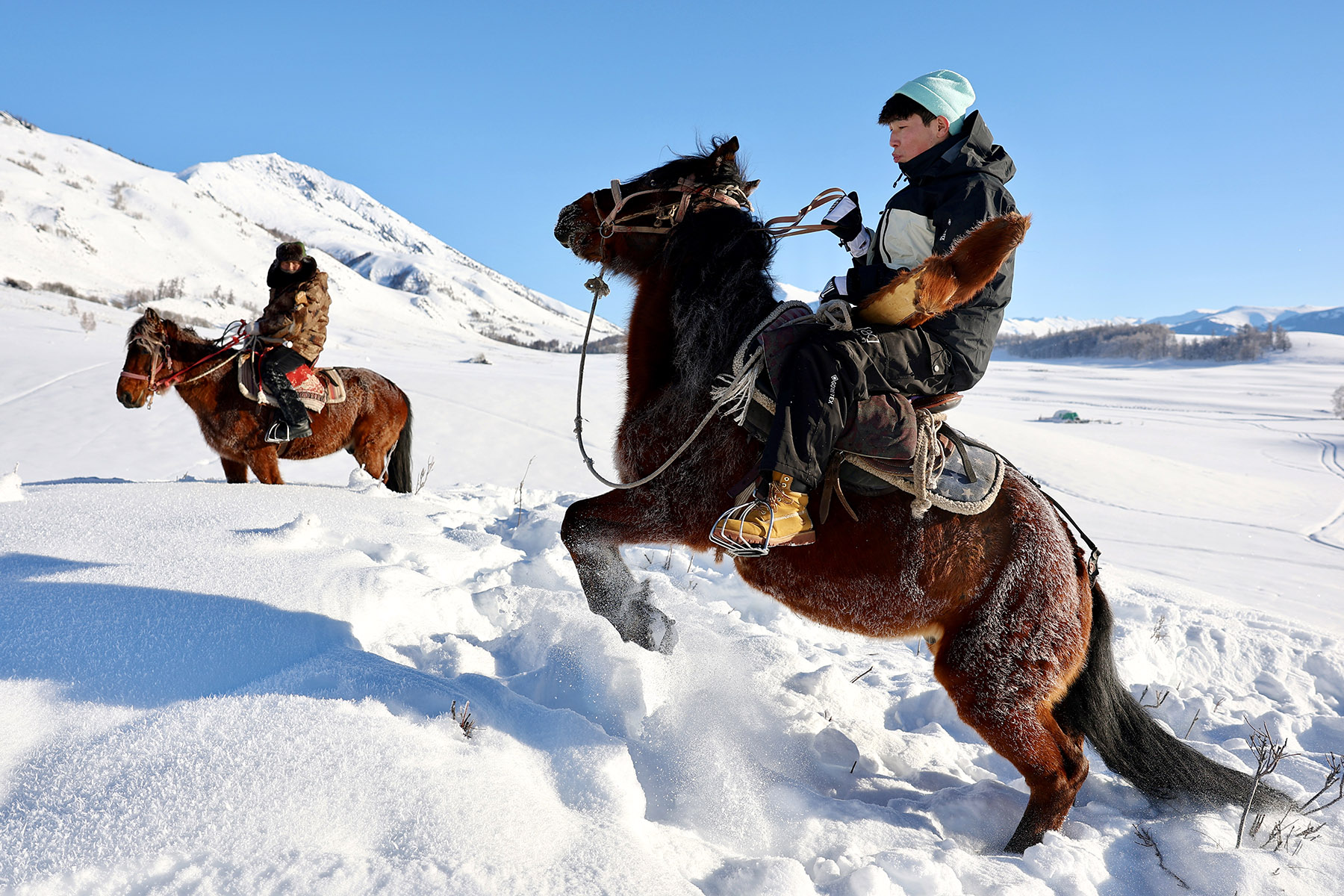
Skiing is still an essential skill that the villagers master. Every household has fur skis, said Adalbek, who recently lent his fur skis to a friend who was trying to find his missing horses in the woods.
Azamat said he began snowboarding when he was 14 because he thought it was cool, but he still finds fur skiing, which not many people can master, even more exciting.
"I've decided to spend time this winter learning how to use fur skis from my father and uncle who lives next door," Azamat said. "I will upload videos of me on my own fur skis on social media, so that more people get to know about the cultural heritage that we are so proud of."
Mastering the sliding technique with fur skis and the wooden pole is actually more difficult than skiing with modern skis, said Azamat, who asked his father to give him a lesson the very next day.
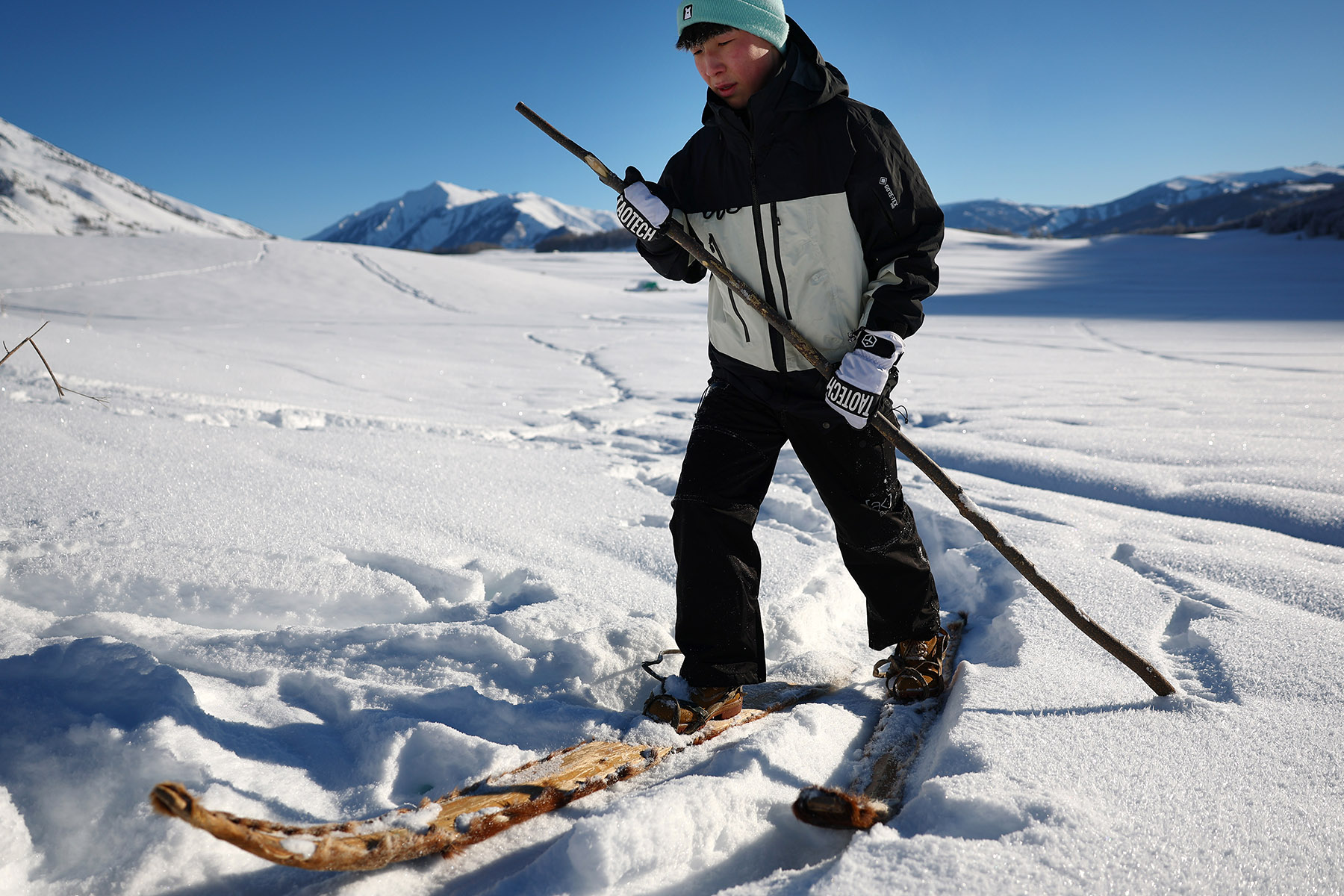
The next morning, the pair set off early from home on horseback carrying fur skis borrowed from Azamat's uncle. The horses were covered with frost as temperatures dropped to more than — 30 C. The animals had to tread gently in the snow, which was deep enough to cover their whole legs.
"When the snow gets deeper and even the horses are unable to walk in it, fur skis are the only means of transport to get around," Adalbek said.
Father and son made their way up a small hill where children from the village had already started to practice snowboarding. Adalbek gave Azamat some tips as they stood on top of the hill on how to slide down gracefully. Unsurprisingly, Azamat lost his balance and landed in an undignified heap as he tried to make his way down.
"He has a long way to go before he can become a fur ski pro who can take part in competitions," Adalbek said with a laugh. To preserve and promote Altay's heritage of fur skis, a series of races are held in the prefecture every winter.
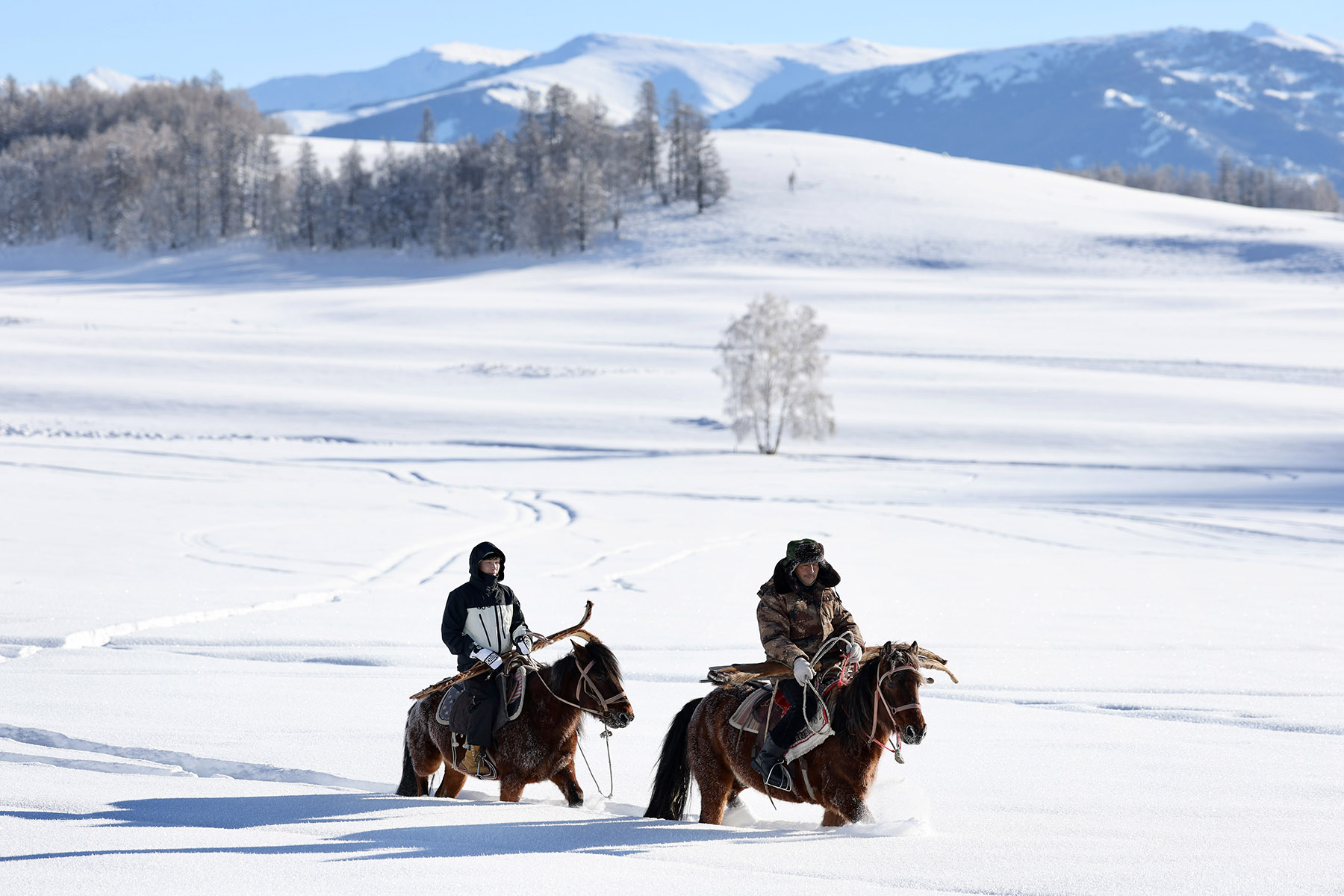
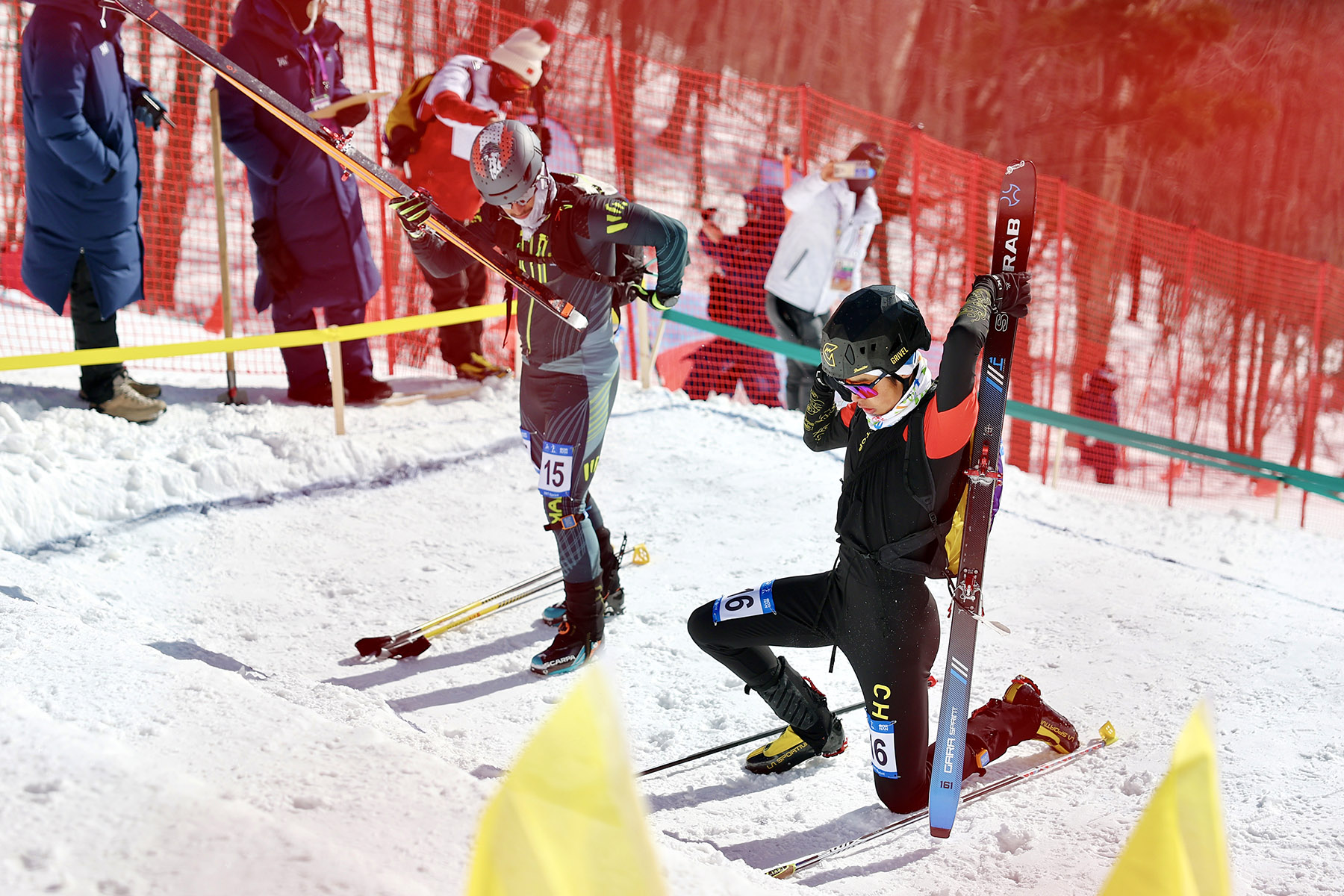
The race courses involve both climbing uphill and going downhill. The skill sets needed to successfully complete such courses include endurance, technical climbing skills, and precise skiing ability, similar to the skills of ski mountaineering, which is a blend of alpine skiing and mountain climbing.
The sport, which has been included in the 2026 Milan-Cortina Winter Olympics, made its official debut at the 9th Asian Winter Games in Harbin on Sunday.
Buluer from Hemu village near Meilifeng said skiing on fur skis since childhood had greatly helped him to excel in ski mountaineering.
The 19-year-old from the Mongolian ethnic group has stood out as one of the most talented skiers on China's ski mountaineering men's team, winning the ski mountaineering men's sprint at the Games on Sunday. He will also take part in the mixed-team relay on Wednesday and is likely to win another gold.
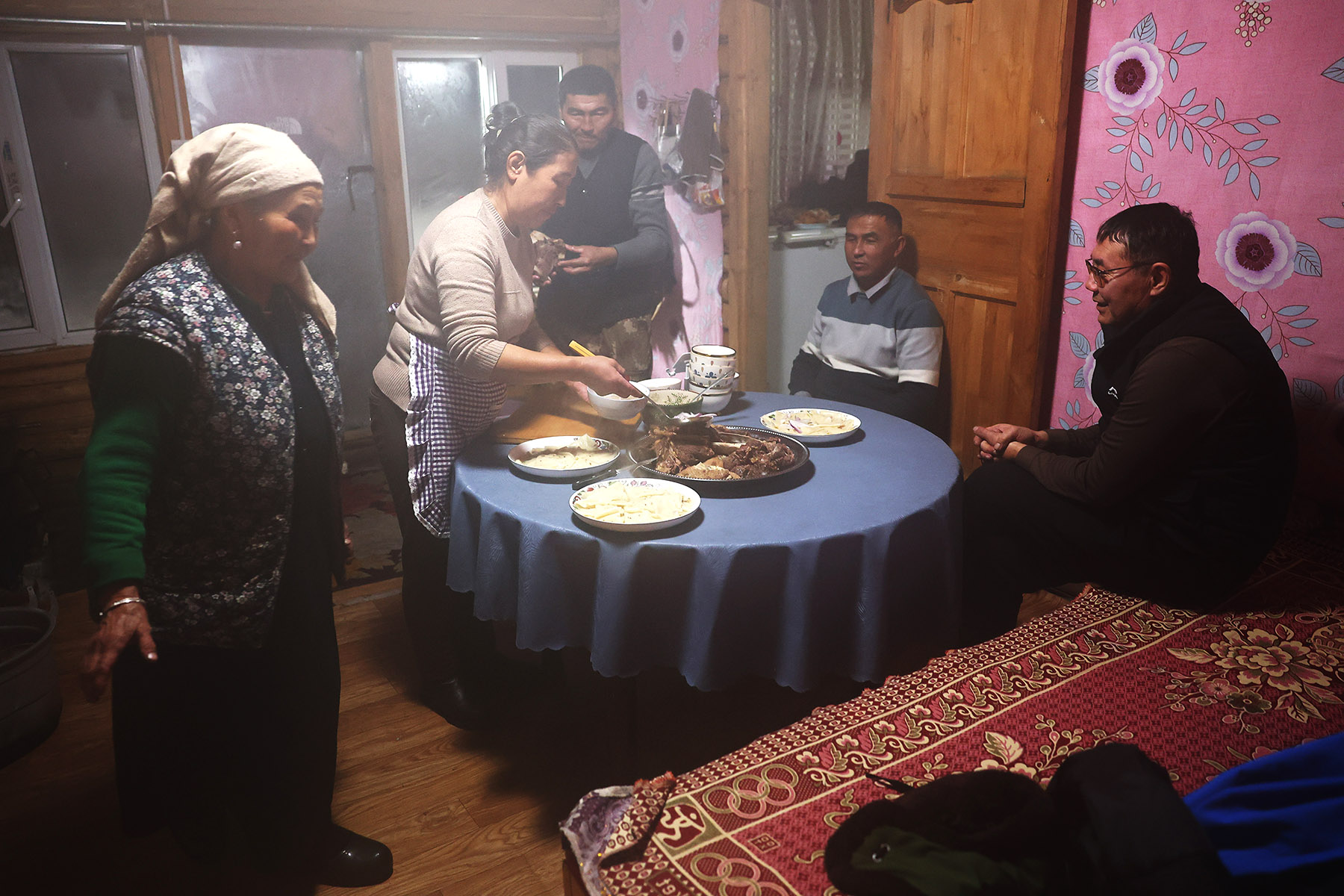
Team China enjoys an upper hand in ski mountaineering in Asia, and that was evident when it swept all medals in the ski mountaineering sprint events on Sunday. However, a gap still exists between China and European powerhouses, Buluer said. "The sport is yet to be well known to all. I hope to achieve better results to contribute to its promotion to attract more people to the sport in China."
Buluer said he has been skiing on fur skis since he was six. "I would go out on fur skis on the mountains all day with my friends when I was a child. We would skip lunch and breaks because we enjoyed it so much."
In December 2021, Xinjiang formed a ski mountaineering team, and at the age of 16, Buluer became one of the first members to join the team after his fur skiing talent was spotted by scouts.
"I hope my performance can encourage more young people from the Kazak and Mongolian ethnic groups from the villages in the Altay Mountains to take on the sport, because we naturally have the grit and passion for mountain life and sports," Buluer said. "But the more places I travel to for competitions, the more I feel that the mountains and snow in my home are the best."
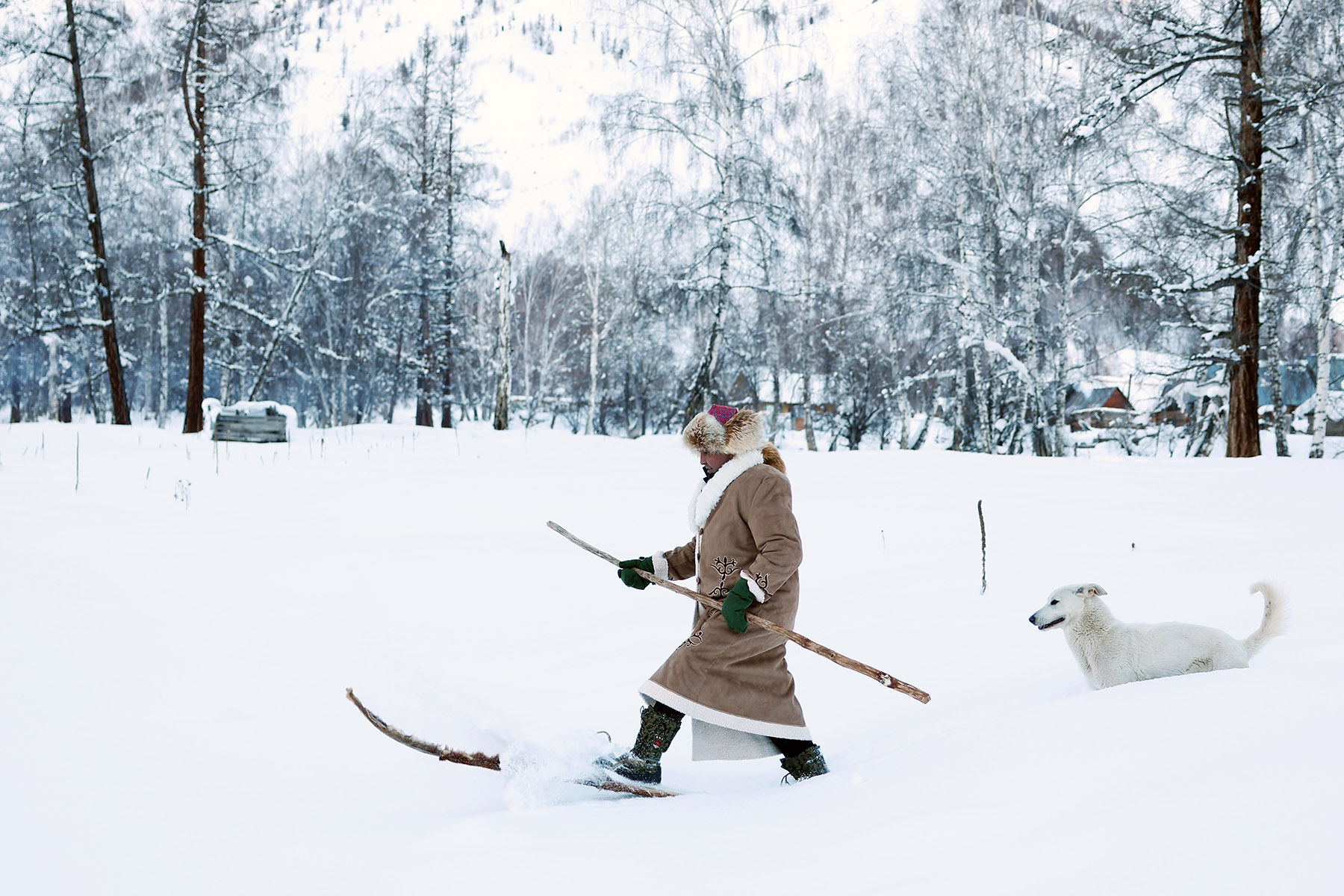
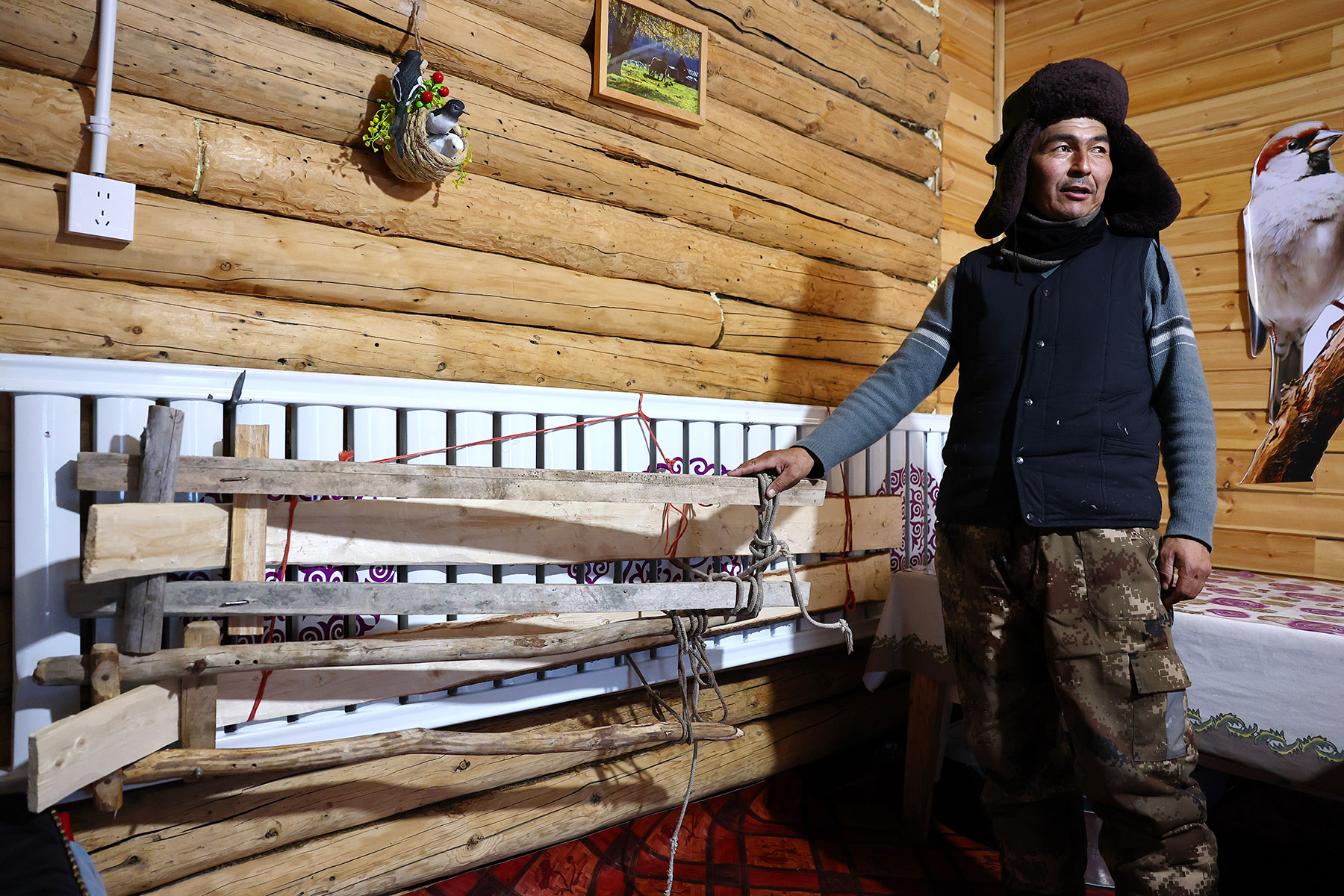
Zangar Kalimuhan, also from Hemu, said Buluer is a household name in the village because he is almost unbeatable in races on fur skis. "He is so fast that the one in second place wouldn't even be able to see him let alone catch up with him. And after winning gold at the Winter Asian Games, he is getting close to becoming a winter Olympics champion."
Zangar from the Kazak ethnic group is a ski patrol at Jikepulin Ski Resort in Hemu, which opens to local people for free. Winter sports have boomed in Altay in recent years as several high-standard ski resorts have been built in the prefecture, which boasts high mountainous terrain, heavy snowfall, excellent snow quality, and low winds.
ALSO READ: Hide and ski
The 25-year-old sometimes takes his fur skis out for practice on the modern courses in the resort, which can also help to let more people know about fur skis. "People are always curious about my skis every time I take them out. I just tell them they are the ancestors of all skis," Zangar said with pride.
With local people's determination to pass down the heritage of fur skis, and having a modern ski resort at their doorstep, Zangar said he believed that more young people from nearby villages will get the chance to become top athletes in winter sports like Buluer and shine on the international stage.
"From local fur skis champion to Winter Asian Games gold medalist, Buluer is a true inspiration for us," Zangar said.


